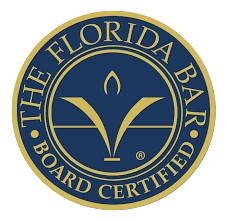We have all walked into a store, restaurant or bathroom and found the floor to be slippery. Was their wet floor sign present? Do you know what was used to clean the floor and when those floors were last mopped? Maybe you were coming down the stairs at your apartment building and nearly fell. Looking back, was the stairway painted? Did it have the proper paint additive to create grip and grit? Did the stairs have metal striping on the edges? Were the stairs up to code?
Trip and fall or slip and fall cases fall under the subset of negligence cases known as premises liability. Generally, the owner or person in control of a piece of property has a duty to maintain that property in a reasonably safe condition and to warn invitees upon that property of any dangerous conditions that the owner knows about or, in the exercise of reasonable care, should know about. In Florida, the burden of proof for an injured victim of negligence in slip and fall or trip and fall is actually fairly high and difficult to meet. For more on the law in premises liability cases in Florida click here to view another article published by the attorneys of Rader Law Group.
Often times, the immediate reaction of the injured person is to blame themselves- “I should have watched where I was going- it’s my fault.” But frequently that is not the case. When walking, people look forward, not down. As we say, “if people were intended to watch the floor when they walk, their eyes would be on their feet.”
When we first sit down with someone who was injured in a slip or trip and fall, they have remarkably little information to help us figure out what the property did wrong and what makes that person or entity responsible for their injuries. There are a few things fall victims can do to help their case.
First, take as many photographs as you can. If there is a spill on the floor, take photos. Did anyone come to clean the area after you fell? Take photos of that person. If the stairs just don’t look right, take photos. Look up. Are there security cameras? Take photos. Are you in a restroom that has a cleaning log behind the door? Take a photo of it.
Evidence has a funny way of quickly disappearing once someone is hurt. Conditions of property often change very quickly, and it is important to preserve pictures of what caused you to fall. We may not be able to get onto the property to take the proper photographs, like in a secured or gated community. By the time we get to a store, the restroom may have been cleaned many times over. Nothing will tell a jury more than the photos you took right after your fall.
Second, report your fall to someone in charge. More often than not, corporate employees are trained not to provide you a copy of an incident report. Ask for a copy of the report. Even if you cannot get the written report, let someone know what happened, show them where you fell and make sure it is documented. Try to get that person’s name and job title as well. Many times, if no one knows about a fall, the defense can simply say it never happened. It is like that old “tree in the forest with no one there” analogy. Make sure someone knows what happened to you as soon as possible.
Next, look around for any witnesses. If anyone saw your fall or came to you aid after you fell, they are a potential witness. Whatever help these people may have offered you at the scene, it is nothing compared to the help they may offer you by providing a statement or testimony about what happened later. It is far easier for a jury to believe two, three or four people with consistent stories than simply the injured victim alone.
Finally, if you are the victim of a fall and suffered an injury, you should seek medical care and quality legal representation as soon as possible. Early investigation, assessment and intervention is essential in these types of cases. If you have questions concern slip and falls or trip and falls, contact the Premises Liability Attorneys at Rader Law Group today. We offer free consultations and have more than 70 years of combined professional experience.









